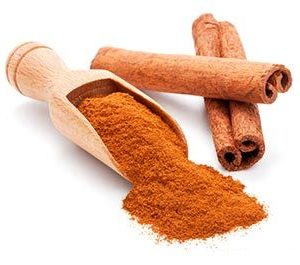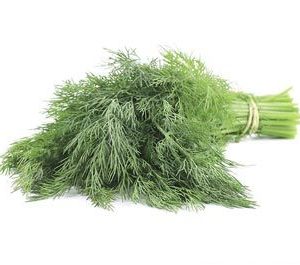Saffron is a spice derived from the stigma of Crocus sativus, a perennial plant belonging to the iris family. It’s believed to be native to Southwest Asia, where it’s still largely cultivated. It’s also grown in Mediterranean countries, including Greece, Morocco and Spain.
Saffron is the most expensive spice in the world. This is because its cultivation and harvest is still performed by hand, as it was since ancient times. One saffron flower contains only three stigmas. It takes around 200,000 dried stigmas from about 70,000 handpicked flowers to make just 500 grams (17 ounces) of pure saffron.
This spice imparts a vibrant golden color to dishes, as well as an earthy flavor that is often described as pungent or aromatic. A little goes a long way when using saffron, hence why recipes often call for just “a pinch” of it. Its distinctive flavor is integral for recreating authentic paella and bouillabaisse dishes.
Saffron is sold all year round as fine red-gold threads or in powdered form. Since ground saffron can be easily adulterated, it’s best to buy saffron threads to make sure that you’re getting the pure product that you’re paying for. Saffron threads also retain their flavor longer (up to six months if stored in an airtight container and kept in a cool, dry place out of direct sunlight) compared to ground saffron.
Because saffron is expensive, unscrupulous retailers try to sell bogus lookalike spices, passing them off as saffron even though they’re derived from a completely different plant. One example is the American or Mexican saffron, which actually comes from a safflower belonging to the daisy family. Another plant that may be confused with this spice is the meadow saffron, which can be toxic so it should be strictly avoided.
You can buy saffron at your local supermarket, although it may not be displayed in open shelves. You may need to ask the service desk, as it’s often locked in a spice cabinet to avoid theft. A better option might be obtaining it from an ethnic specialty grocery store.
Health Benefits of Saffron
According to a study published in the Iranian Journal of Basic Medical Sciences, saffron contains more than 150 different compounds, including vitamins, minerals and phytochemicals. Among the nutrients that it contains in high amounts is vitamin C, which acts as a powerful antioxidant that may help reduce your risk for cancer, cardiovascular disease and other conditions caused by oxidative stress.
Saffron is also an excellent source of magnesium, which acts as “a cofactor in more than 300 enzyme systems that regulate diverse biochemical reactions in the body.” Plus, it’s a good source of manganese, vitamin B6, iron and potassium.
Phytochemical studies have revealed four main bioactive components in saffron: crocin, crocetin, safranal and picrocrocin. These compounds not only give saffron its characteristic flavor and fragrance, but they’re also responsible for the spice’s pharmacological effects. Crocin, in particular, is found to have analgesic, anticancer, antidepressant and anticonvulsant properties. To learn more about the nutritional value of saffron, check out the nutrition facts table below:
| Saffron Nutrition Facts
Serving Size: 1 tablespoon (2 grams) |
||
| Amt. Per Serving |
% Daily Value* |
|
| Calories | 6.51 | |
| Calories from Fat | 0.123 g | |
| Saturated Fat | 0.033 g | |
| Trans Fat | ||
| Cholesterol | 0 mg | |
| Sodium | 3.11 mg | |
| Total Carbohydrates | 1.37 g | |
| Dietary Fiber | 0.082 g | |
| Sugar | ||
| Protein | 0.25 g | |
| Vitamin A0.567 mcg | Vitamin C | 1.7 mg |
| Calcium2.33 mg | Iron | 0.233 mg |
Studies on Saffron
A study published in the Avicenna Journal of Phytomedicine found that the compounds in saffron extract may help lower the risk for neurodegenerative disorders such as Alzheimer’s and Parkinson’s disease, as they provide antioxidant and anti-inflammatory effects as well as interact with “cholinergic, dopaminergic and glutamatergic systems.” The researchers also highlighted the potential of saffron to help manage mild to moderate depression by interacting with the serotonin and noradrenaline systems.
In another study, saffron was examined for its effects on aluminum toxicity and was found to help reverse harmful aluminum-induced symptoms, such as memory loss and neurological disorders. Saffron extract also helped improve lipid peroxidation, which is important for inhibiting diseases in the body, and glutathione levels, which may help get rid of DNA-damaging free radicals. Scientists concluded that saffron has “neuroprotective potential under toxicity.”
Saffron Fun Facts
Saffron is known for giving dishes a vibrant golden hue through its red stigmas, but the color of the flowers where these prized threads came from is actually light purple. Aside from its culinary uses, saffron was also traditionally cultivated for perfumery, cosmetics and textile-dyeing. It was also used in Ayurvedic medicine as “a sedative, expectorant, antiasthma, emmenagogue and adaptogenic agent.”
Summary
Saffron is a prized spice that comes from the purple Crocus sativus flower containing three delicate stigmas or threads. It’s largely cultivated in Southwest Asia and Mediterranean countries, with uses ranging from textile-dying to its spicy goodness. But the nutritional aspects it imparts are as dramatic as its vibrant hue.
Vitamin C is by far the most prominent ingredient, as well as magnesium, manganese, iron, potassium and vitamin B6. Saffron also contains a variety of powerful bioactive components that deliver pharmacologic properties, with the primary ones being crocin, crocetin, safranal and picrocrocin.
If you’re not yet familiar with saffron’s earthy, pungent flavor, try making the recipe mentioned above. You may find saffron to be your new culinary favorite.







Reviews
There are no reviews yet.